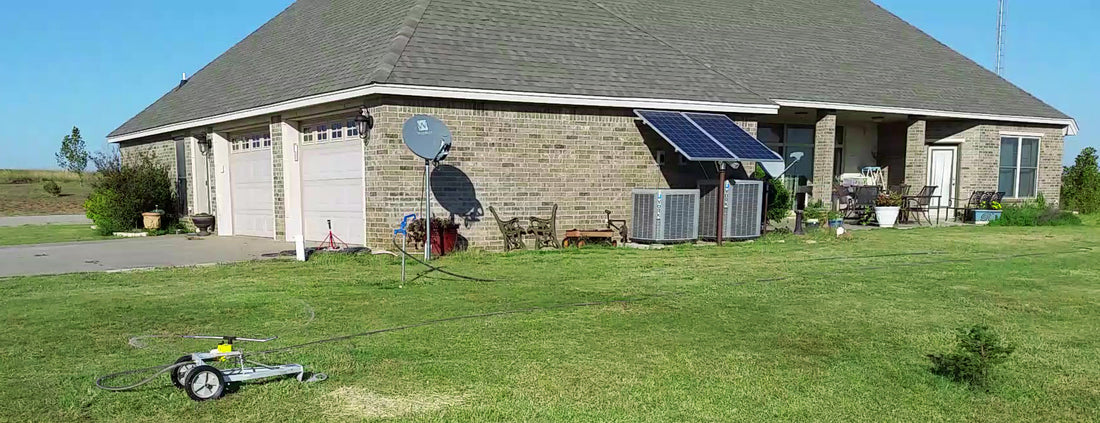
How To Use Solar Water Pumps for Your Home
Share
Using solar water pumps for your home can be an eco-friendly and cost-effective way to pump water, especially in areas where grid electricity might not be reliable or is too expensive. Here's how you can use solar water pumps for your home:
1. Choosing the Right Solar Water Pump
-
Determine Your Needs: Consider how much water you need and how high the water needs to be pumped. Solar pumps come in various sizes and capacities, so you need to match the pump's power to your requirements.
-
Types of Solar Water Pumps:
-
Submersible Pumps: These are placed underwater, commonly used for wells or boreholes.
-
Surface Pumps: These sit above the water and are used for ponds, lakes, or shallow wells.
-

2. Setting Up the Solar Panels
-
Calculate Power Requirements: The solar panels should be able to generate enough energy to run the pump efficiently. A small pump might only need a couple of solar panels, while larger pumps may require a more extensive solar array.
-
Optimal Panel Placement: Install the solar panels in an area with maximum sunlight exposure, typically on your roof or an open area of your yard that is not shaded. The panels should ideally face the sun directly for maximum efficiency.
3. Connecting the Pump to the Solar Panels
-
Wiring: Solar pumps generally come with their own controllers that help manage power coming from the solar panels. These controllers can adjust the voltage and protect the pump from electrical surges.
-
Inverter (if necessary): Some pumps run on AC (alternating current), so you might need an inverter to convert the DC (direct current) from the solar panels into AC power. However, many solar water pumps are DC-powered, so inverters might not be necessary.
4. Water Source and Plumbing Setup
-
Water Source: Depending on where you need water pumped from (well, river, pond, etc.), ensure that the system is compatible with the water source. The pump should be placed in a way that it can pull water efficiently.
-
Piping and Storage: Once the pump draws water, you'll need a pipe to direct it to your storage tank or water system in your home. It's also a good idea to have a storage tank to store the water for later use.

5. Maintenance and Monitoring
-
Regular Maintenance: Like any water pump, solar pumps require regular maintenance, especially cleaning the pump and solar panels to ensure optimal performance.
-
Monitor Performance: Monitor the performance of your pump to ensure it's providing the needed amount of water. If it's not functioning well, you might need to adjust the positioning of the solar panels or clean the pump.

6. Additional Features
-
Battery Storage (optional): You can integrate a battery storage system with your solar pump. This allows you to store excess energy generated during the day for use during the night or on cloudy days.
-
Automation and Sensors: Some systems come with sensors to automatically turn the pump on or off when water levels change, saving energy and ensuring the system runs efficiently.
Benefits of Solar Water Pumps
-
Environmentally Friendly: They are powered by renewable solar energy, reducing your carbon footprint.
-
Lower Operating Costs: Once set up, the only major ongoing cost is maintenance, as solar power is free.
-
Independence from Grid: Solar water pumps work even when there is no electricity grid, making them ideal for remote or off-grid locations.
In short, using a solar water pump for your home is a sustainable way to provide water for your needs while taking advantage of the power of the sun. Just make sure to properly size the pump, install it correctly, and maintain the system for best performance.
Advanced Power Inc. provides free sales technical support to properly size your solar water pumping system to your application. We have nearly 40 years in the solar water pump industry, and are backed by farmers, ranchers and home owners for great customer support!

